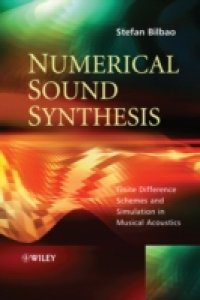Digital sound synthesis has long been approached using standard digital filtering techniques. Newer synthesis strategies, however, make use of physical descriptions of musical instruments, and allow for much more realistic and complex sound production and thereby synthesis becomes a problem of simulation. This book has a special focus on time domain finite difference methods presented within an audio framework. It covers time series and difference operators, and basic tools for the construction and analysis of finite difference schemes, including frequency-domain and energy-based methods, with special attention paid to problems inherent to sound synthesis. Various basic lumped systems and excitation mechanisms are covered, followed by a look at the 1D wave equation, linear bar and string vibration, acoustic tube modelling, and linear membrane and plate vibration. Various advanced topics, such as the nonlinear vibration of strings and plates, are given an elaborate treatment. Key features: Includes a historical overview of digital sound synthesis techniques, highlighting the links between the various physical modelling methodologies. A pedagogical presentation containing over 150 problems and programming exercises, and numerous figures and diagrams, and code fragments in the MATLAB programming language helps the reader with limited experience of numerical methods reach an understanding of this subject. Offers a complete treatment of all of the major families of musical instruments, including certain audio effects. Numerical Sound Synthesis is suitable for audio and software engineers, and researchers in digital audio, sound synthesis and more general musical acoustics. Graduate students in electrical engineering, mechanical engineering or computer science, working on the more technical side of digital audio and sound synthesis, will also find this book of interest.

